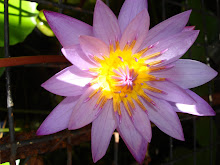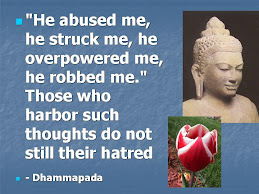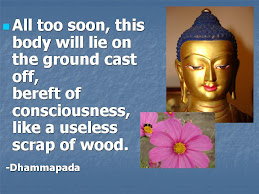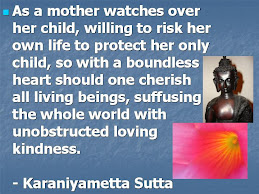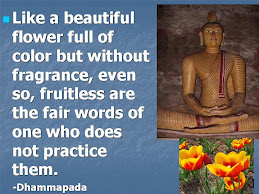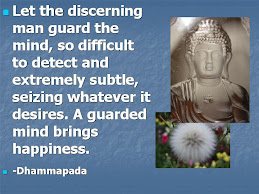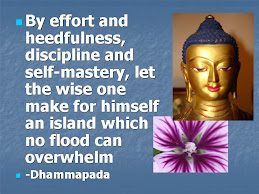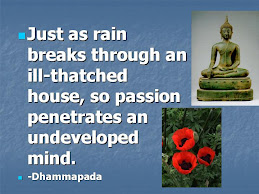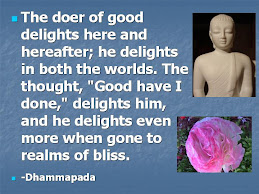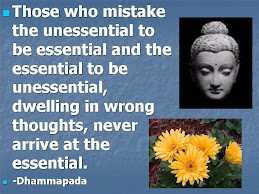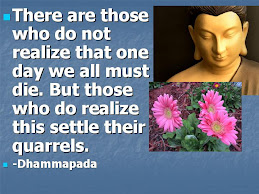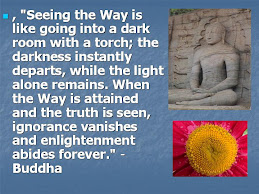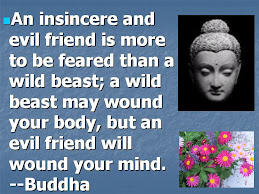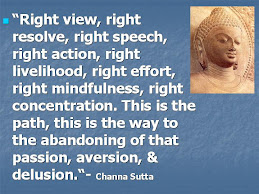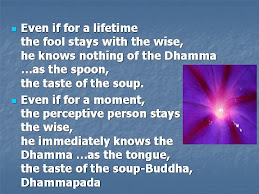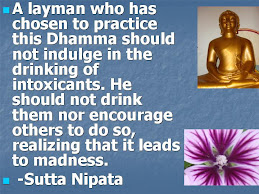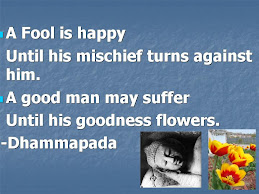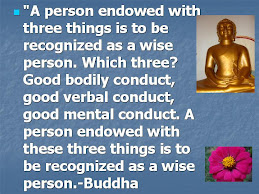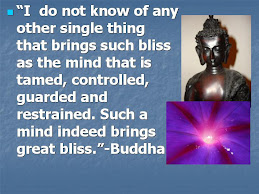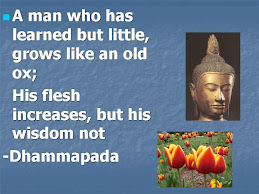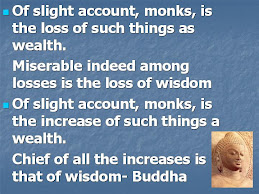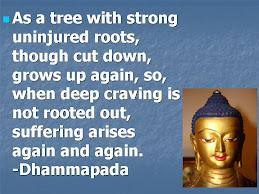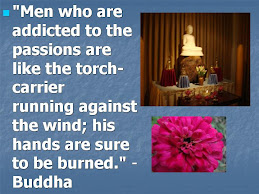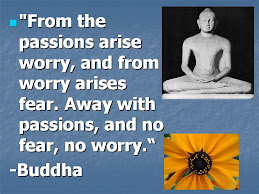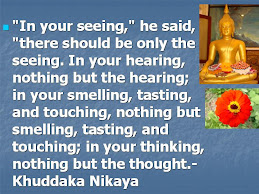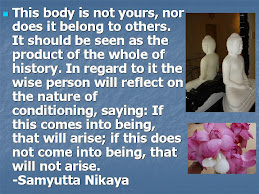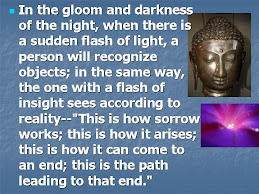The third noble ruth is the cessation from suffering. This is how it is said in Maha-Satipatthana Sutta.
"And what is the noble truth of the cessation of stress? The remainderless fading & cessation, renunciation, relinquishment, release, & letting go of that very craving.
"And where, when being abandoned, is this craving abandoned? And where, when ceasing, does it cease? Whatever seems endearing and agreeable in terms of the world: that is where, when being abandoned, this craving is abandoned. That is where, when ceasing, it ceases.
"And what seems endearing and agreeable in terms of the world? The eye seems endearing and agreeable in terms of the world. That is where, when being abandoned, this craving is abandoned. That is where, when ceasing, it ceases.
"The ear... The nose... The tongue... The body... The intellect...
"Forms... Sounds... Smells... Tastes... Tactile sensations... Ideas...
"Eye-consciousness... Ear-consciousness... Nose-consciousness... Tongue-consciousness... Body-consciousness... Intellect-consciousness...
"Eye-contact... Ear-contact... Nose-contact... Tongue-contact... Body-contact... Intellect-contact...
"Feeling born of eye-contact... Feeling born of ear-contact... Feeling born of nose-contact... Feeling born of tongue-contact... Feeling born of body-contact... Feeling born of intellect-contact...
"Perception of forms... Perception of sounds... Perception of smells... Perception of tastes... Perception of tactile sensations... Perception of ideas...
"Intention for forms... Intention for sounds... Intention for smells... Intention for tastes... Intention for tactile sensations... Intention for ideas...
"Craving for forms... Craving for sounds... Craving for smells... Craving for tastes... Craving for tactile sensations... Craving for ideas...
"Thought directed at forms... Thought directed at sounds... Thought directed at smells... Thought directed at tastes... Thought directed at tactile sensations... Thought directed at ideas...
"Evaluation of forms... Evaluation of sounds... Evaluation of smells... Evaluation of tastes... Evaluation of tactile sensations... Evaluation of ideas seems endearing and agreeable in terms of the world. That is where, when being abandoned, this craving is abandoned. That is where, when ceasing, it ceases.
"This is called the noble truth of the cessation of stress.
" Maha-satipatthana Sutta: The Great Frames of Reference" (DN 22), translated from the Pali by Thanissaro Bhikkhu. Access to Insight, 15 October 2011,http://www.accesstoinsight.org/tipitaka/dn/dn.22.0.than.html . Retrieved on 7 May 2013.
So the third noble truth cessation of suffering is basically cessation of craving. In the passage above in Maha-Satipatthana sutta Buddha explains the craving that results from the cognitive function of the six senses. This is our "world." The world of six senses. This is basically how we perceive our world around us. Now we will briefly revisit the basic mind works model (shown below).
You can see from the figure above how the cognitive pathways flow from the senses and how contact plays a central role in making this a reentry circuit of thoughts. It is important to note that only one consciousness arises at a given time resulting in one contact. This will be the corresponding contact of the sense base that is firing (one sense is on "fire") in that moment. However in the model above it is shown as one common contact to keep the model simple. Therefore only one sense base is born (and die) at a given time. This the momentary birth and death sometimes we talk about in Buddhism. We have discussed in great detail how we can apply this model to dependent origination and rebirth in our other posts like the mind work model, rebirth and the youtube channel videos.
From dependent origination we know that contact causes feeling and feeling causes our craving. This then causes our clinging (feeding). Please see the diagram below. Here only five steps are shown out of the twelve for the purpose of this post.
If we can get rid of our contact we will have no more feeling and no more craving. However it is impossible to get rid of the first contact. It is a process dependently arisen as a result of an interaction between a sense and a sensory object. We will call the first contact as the primary contact. The subsequent contacts that arise as a result of reentry of thoughts we will call here as the secondary contacts. The generation of secondary contacts we are entirely responsible and it is a result of our craving. The caving generates directed thoughts and evaluation of the sensory object perceived through the sense organ (as said in the above passage from the sutta). The idea of training the mind through the noble eight fold path is to gradually get rid of the secondary contacts that occur as a result of our craving as we cling to the object. As we become disenchanted and dispassionate (less craving to the same object), less and less contacts will form from the same sensory encounter. When one reaches cessation only the primary contact will remain with a given sensory encounter. There is no more craving and clinging. This is "when one sees, one only sees (brief instructions Buddha gave to Bahiya)." No more delight and evaluation of sights as before. There are no more taints (previous memories of the encounters) automatically flowing through the mind as there is no more craving. However if he intends to have more contact he can do so if necessary without clinging. The only way to confirm this hypothesis is to directly experience this ourselves, developing the noble eight fold path to its culmination and gain insight knowledge, vision and the final release.
If this hypothesis is correct then there should be a sutta that explains the cessation of contact (secondary) leading to cessation of feeling and cessation of craving. Nibbedhika sutta is an good example for this.
It says:
"And what is the cessation of feeling? From the cessation of contact is the cessation of feeling..
Here what is meant by the cessation of contact is the cessation of the secondary contact or multiple secondary contacts as a result of reentry thoughts. Please see below the extract of a passage on feeling from this sutta.
"'Feeling should be known. The cause by which feeling comes into play... The diversity in feeling... The result of feeling... The cessation of feeling... The path of practice for the cessation of feeling should be known.' Thus it has been said. In reference to what was it said?
"There are these three kinds of feeling: a feeling of pleasure, a feeling of pain, & feeling of neither pleasure nor pain.
"And what is the cause by which feeling comes into play? Contact is the cause by which feeling comes into play.
"And what is the diversity in feeling? There is the feeling of pleasure connected with the baits of the world. There is the feeling of pleasure not connected with the baits of the world. There is the feeling of pain connected with the baits of the world. There is the feeling of pain not connected with the baits of the world. There is the feeling of neither pleasure nor pain connected with the baits of the world. There is the feeling of neither pleasure nor pain not connected with the baits of the world. This is called the diversity in feeling.
"And what is the result of feeling? One who feels a feeling produces a corresponding state of existence, on the side of merit or demerit. This is called the result of feeling.
"And what is the cessation of feeling? From the cessation of contact is the cessation of feeling; and just this noble eightfold path — right view, right resolve, right speech, right action, right livelihood, right effort, right mindfulness, right concentration — is the way leading to the cessation of feeling.
"Now when a disciple of the noble ones discerns feeling in this way, the cause by which feeling comes into play in this way, the diversity of feeling in this way, the result of feeling in this way, the cessation of feeling in this way, & the path of practice leading to the cessation of feeling in this way, then he discerns this penetrative holy life as the cessation of feeling.
"'Feeling should be known. The cause by which feeling comes into play... The diversity in feeling... The result of feeling... The cessation of feeling... The path of practice for the cessation of feeling should be known.' Thus it has been said, and in reference to this was it said.
"Nibbedhika Sutta: Penetrative" (AN 6.63), translated from the Pali by Thanissaro Bhikkhu. Access to Insight, 4 July 2010,http://www.accesstoinsight.org/tipitaka/an/an06/an06.063.than.html . Retrieved on 7 May 2013.
So in summary with the cessation of contact (secondary) there comes the cessation of feeling, craving and clinging. This means no more becoming and no more birth. The end of birth means no more old age, sickness, death. This is end of suffering in life. The key is to follow the noble eightfold path as Buddha once said "the right technique will give you the right result."























